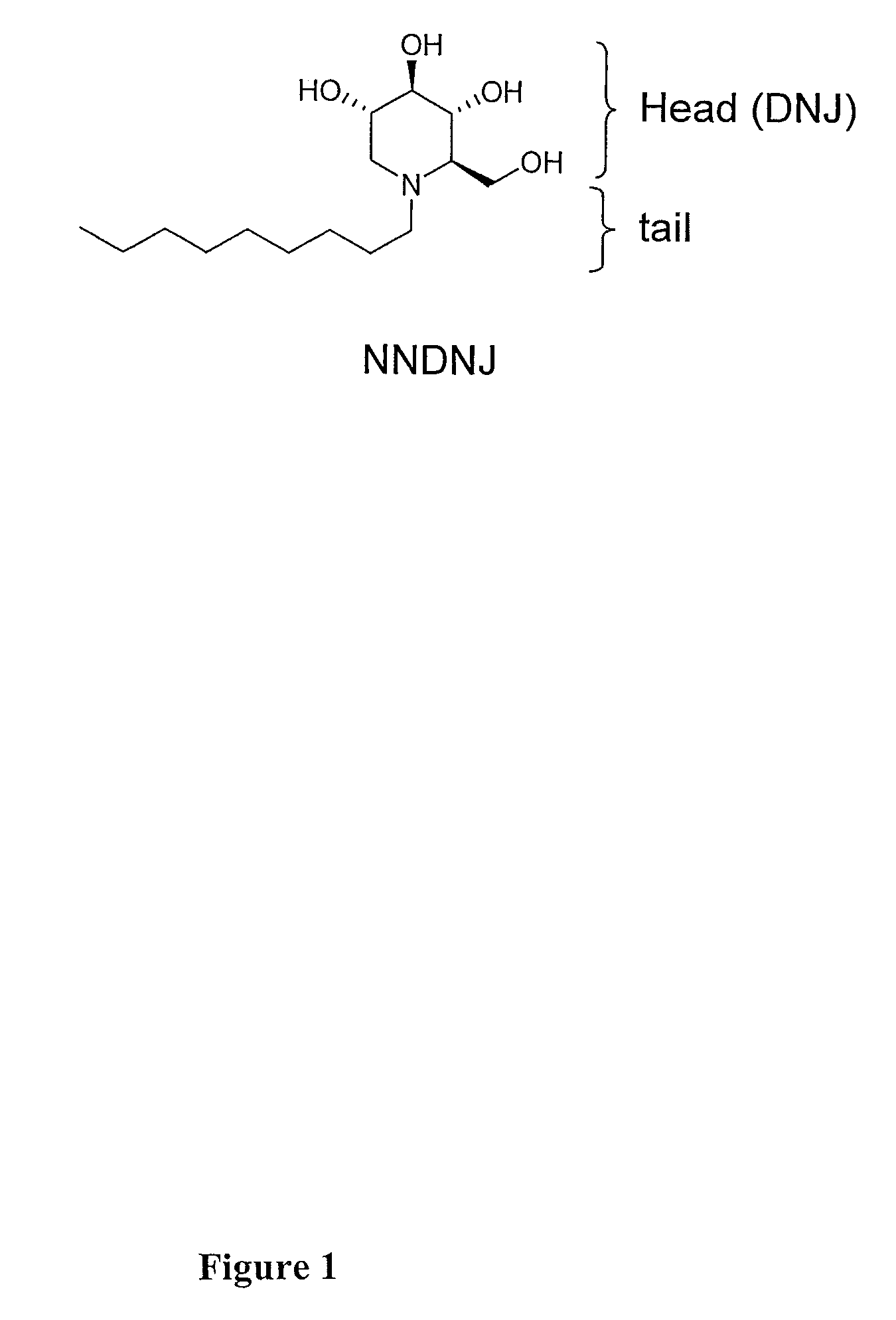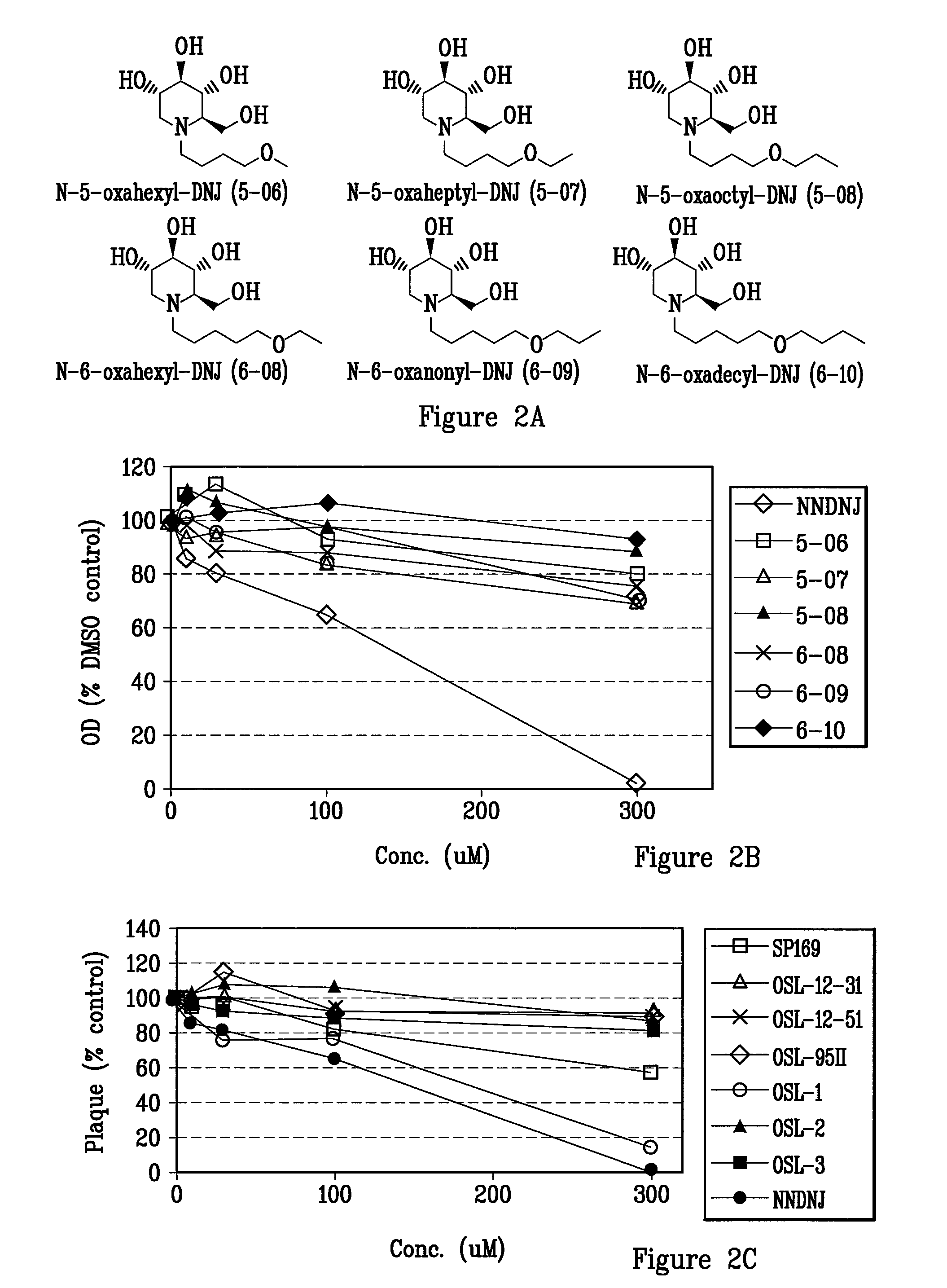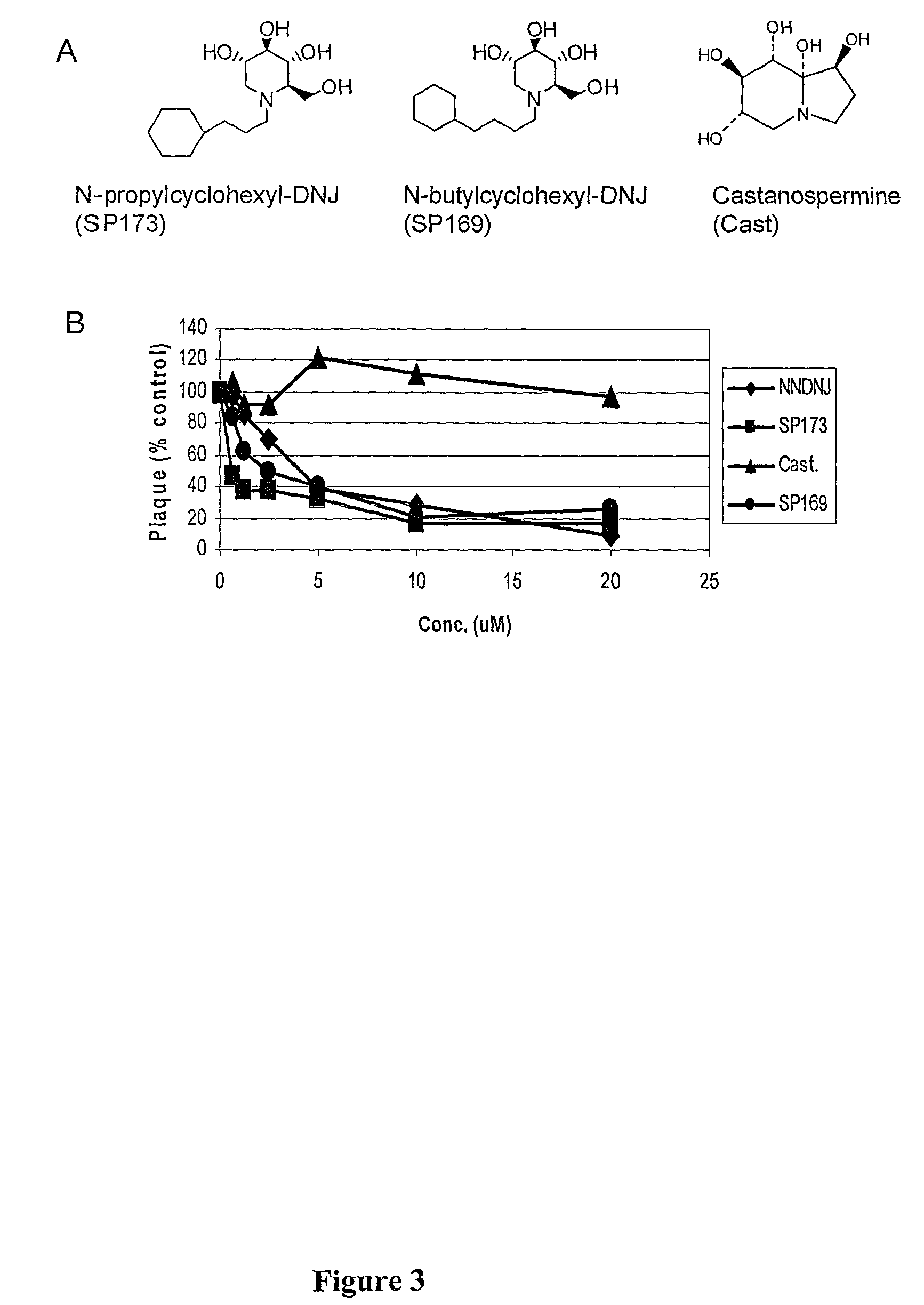Iminosugar compounds with antiflavirus activity
a technology of inosugar and antiflavirus, which is applied in the direction of organic chemistry, enzymology, and chemical treatment enzyme inactivation, can solve the problems of ineffective vaccine or antiviral drug therapy, limited success, and ineffective mosquito control means
- Summary
- Abstract
- Description
- Claims
- Application Information
AI Technical Summary
Benefits of technology
Problems solved by technology
Method used
Image
Examples
example 1
General Materials and Methods
[0150]Cells and viruses. BVDV-free MDBK cells (CCL 22) were obtained from the American Type Culture Collection and propagated in DMEM / F12 essential medium supplemented with penicillin (500 U / ml), streptomycin (500 U / ml), and 10% heat inactivated horse serum (Invitrogen). Cells were maintained in a humidified incubator at 37° C. with 5% CO2. BVDV (NADL strain) was obtained from Dr. Rubin Donis (Univ. of Nebraska-Lincoln). For infections, virus inoculum was added in complete medium and adsorbed for 1 h at 37° C., the inoculum was then removed, the cells washed once with medium and fresh medium containing compounds added. Virus stocks were prepared by freeze-thawing the infected cells and culture supernatant three times followed by centrifugation at 1,000 g for 5 min. Stock titers were determined, and stocks were aliquoted and stored at −80° C. WNV was obtained from a cDNA clone of a human 2002 isolate from Texas (Rossi et al., 2005); virus obtained from BH...
example 2
Oxygenated Alkyl Side Chain Containing DNJ
[0155]Alkyl side chains of 5, 6, 7, 8 and 9 carbon lengths containing oxygen atom between carbon 4 and 5, and 5 and 6 positions, respectively, were synthesized via reductive amination with RCHO / H2 / Pd—C upon DNJ (FIG. 2A).
[0156]The anti-viral activity of this family of compounds against BVDV was then determined by a single cycle viral yield reduction assay in Madin Darby Bovine Kidney (MDBK) cells where the compounds are incubated with cells for 20 hours during the period of infection. Yields of virus were then determined by plaque assay on new MDBK cell monolayers. Compound toxicity was measured by MTT assay and the CC50 determined as the concentration of compound producing 50% reduction in absorption readings. The results show that all N-alkyl DNJs possessing oxygen atoms have significantly less cytotoxicity than NNDNJ with CC50 greater than 300 uM (FIG. 2B). This is consistent with previous findings in which oxygenation and methoxylation o...
example 3
DNJ Containing N-Alkylcycloalkyl Side Chain is Active Against WNV and is Less Toxic
[0158]Previous work was consistent with the notion that DNJs with alkylcycloalkyl side chains possessed a conformationally restricted element and possessed anti-BVDV activity that is superior to DNJ and NNDNJ (Mehta et al., 2002b). Indeed, as little as 3 μM of compound N-butylcyclohexyl-DNJ (SP169) and N-propylcyclohexyl-DNJ (SP173) inhibited 50% of the yield of BVDV in tissue culture (data not shown). However, the previous studies had been limited to BVDV.
[0159]Inventors determined the antiviral activity of the N-butylcyclohexyl-DNJ (SP 169) and N-propylcyclohexyl-DNJ (SP173) against WNV, a member of the flavivirus family that buds from the cell in a manner with similarities to BVDV. For this purpose, BHK cells were infected with WNV at an moi of 0.05, and incubated in either the absence or presence of various concentrations of N-butylcyclohexyl-DNJ (SP169) and N-propylcyclohexyl-DNJ (SP173). After t...
PUM
| Property | Measurement | Unit |
|---|---|---|
| concentrations | aaaaa | aaaaa |
| concentration | aaaaa | aaaaa |
| structure | aaaaa | aaaaa |
Abstract
Description
Claims
Application Information
 Login to View More
Login to View More - R&D
- Intellectual Property
- Life Sciences
- Materials
- Tech Scout
- Unparalleled Data Quality
- Higher Quality Content
- 60% Fewer Hallucinations
Browse by: Latest US Patents, China's latest patents, Technical Efficacy Thesaurus, Application Domain, Technology Topic, Popular Technical Reports.
© 2025 PatSnap. All rights reserved.Legal|Privacy policy|Modern Slavery Act Transparency Statement|Sitemap|About US| Contact US: help@patsnap.com



